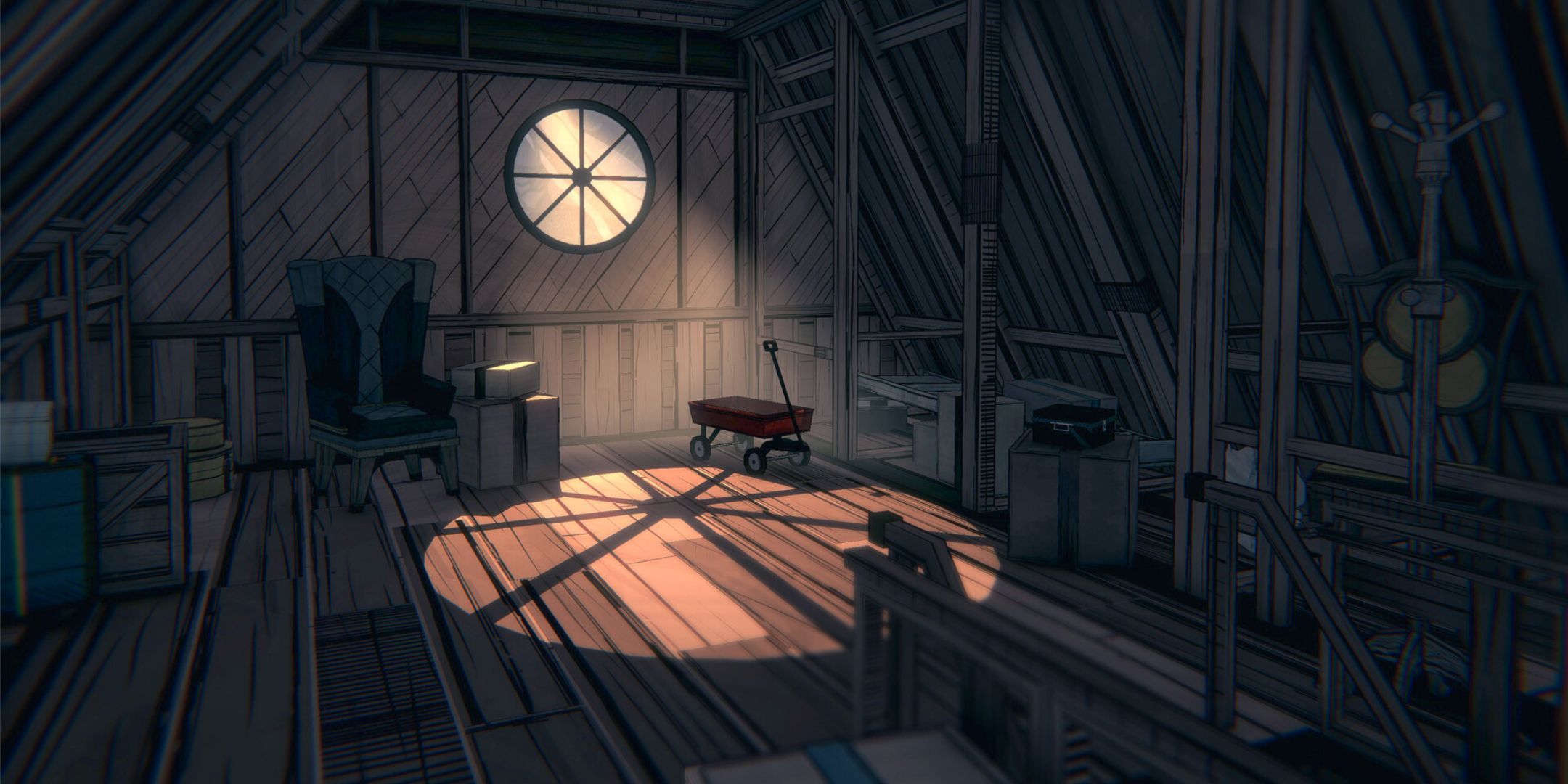Rusty Rabbit initially piqued my interest because of its completely bonkers concept: Earth has been plunged into a state of apocalypse, and humans have abandoned the planet. All that’s left is a race of intelligent rabbits who believe the Peter Rabbit books are gospel. They spend their time digging for junk in the underground tunnels leftover by the long-gone humans.
In this 2.5D Metroidvania, you play as a grumpy rabbit known as Rusty Stamp, who appears to have alienated all of his friends and his family, including a daughter who is pointedly missing from the picture. He’s a full-time junker, riding his mecha-suit nicknamed ‘Junkster’ into the bowels of the ruined earth. The rabbit is also voiced by Takaya Kuroda of Yakuza fame. Come on. What’s not to love about that?

Related
I Hate Blue Prince For What It’s Done To Me
Blue Prince is so smart, it makes me feel stupid.
The Problems
Turns out, quite a lot. The game crashed a few times at launch. It seemed to be getting confused between keyboard/mouse controls and my Xbox controller, and even when I managed to get the game going properly, the first hour or so of gameplay is mostly a collection of drawn-out, exposition-heavy cutscenes with a bunch of rabbits. I know some people will enjoy this sort of visual novel storytelling (Gen Urobuchi, the writer of Rusty Rabbit, is an award-winning visual novelist), but it’s not for me – definitely not in a Metroidvania, a genre that is now well-known for environmental storytelling. The narrative serves its purpose perfectly fine, and there will be some players who connect with the gang of rabbits.
The stories in Metroidvanias shouldn’t be overbearing. In games like Animal Well and Hollow Knight there are themes and organic narratives that develop as you learn to conquer the levels. In Rusty Rabbit, there are rabbits called ‘Paul’ telling you how to destroy blocks of junk. There’s a rival gang of Junkers called the BBs and, while the voice acting is pretty decent, I just couldn’t care less about any of them. What started out as curiosity about the world and its story, quickly ended up being, oh my god, why won’t these rabbits shut the hell up and let me collect junk?
There are occasional moments – and I really mean only once or twice in the few hours I played – where Rusty Rabbit gets storytelling right. I don’t want to spoil these moments for you if you plan to play the game, but they mostly come through the form of the DATM. These are machines that you find in the level checkpoints that slowly unravel the mystery around the apocalypse and Rusty’s missing daughter. I would’ve been quite happy with that as the entire format of storytelling in the game.
When you head back to the main village, which acts a sort of world hub, there are also a few social sim elements: villagers to talk to, more bits of narrative to uncover, a place to upgrade your mech, and so on. It’s a nice addition to the Metroidvania format that makes some aspects of it feel more like a roguelike, but just like dealing with the rabbits in the rest of the game, I couldn’t sit through any more of the dialogue in the village.
Mechanics
Beyond the narrative, Rusty Rabbit is a frustrating game to play mechanically. The controls just don’t feel quite right. Your mech is chunky and it feels like that. In a style of game that relies so much on sharp movement – especially in any number of Rusty Rabbit’s quite difficult boss fights – this is a massive issue. I thought that you might be able to upgrade the movement capabilities of the mech through the game’s robust upgrade system, but it’s mostly weapons. The grapple hook alleviates some issues, but not enough for me to recommend the game based on its movement.
I also dislike the combat, the way you aim your weapons, and the poor telegraphing in the boss fights. Even in the first boss, which is meant to introduce you to the concept of boss fighting in the game, the telegraphing was a confusing and frustrating mess. Sometimes the boss would appear from off screen to land on top of my rabbit. While some of the later bosses were quite spectacular, they still didn’t feel good to fight.
Rusty Rabbit is a serviceable Metroidvania at best, which just isn’t enough to warrant a recommendation. If you love rabbits, or Takaya Kuroda, then you might get a few laughs out of this game, but chances are you won’t actually enjoy playing it that much. It’s a shame: a great concept, some half-decent writing in places, let down by shoddy controls and gameplay.


0 Comments